With two identical coils wound around a magnetic core when you apply a voltage to one coil, the same voltage appears across the terminal of the other coil. This is because the primary voltage sets up a current that induces the same voltage in the secondary coil: -

We don't normally call that secondary voltage a back-emf (or CEMF as in counter emf), we call it an induced voltage.
For the case of a simple DC voltage applied across the primary coil, the primary current that flows is a ramp i.e. di/dt = V/L or, if 1 volt is applied across 1 henry we get current ramping at 1 amp per second.
The current produces a magnetic flux and, if the two coils are identically wound and tightly coupled, we say that the magnetic flux 100% couples between the two coils. That flux (or rather the rate of change of flux) induces the secondary voltage.
Because the rate of change of current is constant, the rate of change of flux is also constant hence we get a constant voltage out for a constant voltage in. We have discovered the transformer!
Induced voltage is \$-N \frac{d\phi}{dt}\$ but why the minus sign?
Consider this: it's not just the secondary winding that is subject to the changing flux; the primary winding (despite being driven) shares the same magnetic field and it also has a voltage induced in it. That induced voltage, is "opposing" the driving voltage hence it posseses a minus sign. If it didn't have a minus sign then the induced voltage would aid an even bigger current flow and that would aid an even bigger flux and an even bigger induced voltage and the universe would rapidly disintegrate. It's as important as that!
After all, when we make an inductor we know it doesn't behave like a short circuit (despite it being made of virtually zero ohm copper wire) so the back emf opposes the driving voltage and is virtually identical in amplitude to it. This then raises the problem of "how can current flow in an inductor" and, if you delved into the physics (beyond this site) you'd conclude that the rate of change of current in an inductor is caused by minute differences between applied and back-emf.
So, the minus sign indicates a back emf but we don't always use it and that may give rise to some confusion. We don't always use it because of laziness and that fact that when we talk to other engineers wh are "in the know" they understand what we mean.
Is there an actual need for the concepts “emf” and “back emf”?
I'd say yes but would also add "induced emf" to the list.
